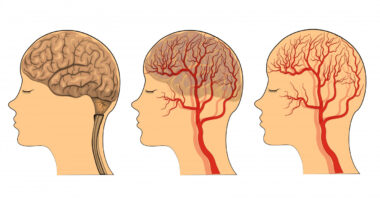Artery issues seen more in vEDS than in other blood vessel disorders
Study findings could help guide personalized care based on specific conditions

People with vascular Ehlers-Danlos syndrome (vEDS) more commonly experience artery problems than people with other disorders that are also marked by weakened blood vessels, a new study reports.
The findings could help guide more personalized care and monitoring based on each individual’s condition, researchers said.
“Tailored surveillance and management strategies based on these factors can facilitate early detection and timely intervention, thereby improving patient outcomes,” the scientists wrote in the study, “Differences in Arterial Events in Vascular Ehlers-Danlos, Loeys-Dietz, and Marfan Syndrome.” It was published in the Journal of the American College of Cardiology.
Marfan, Loeys-Dietz syndromes also analyzed in study
A genetic disorder, vEDS is caused mainly by mutations in the COL3A1 gene. Like other forms of Ehlers-Danlos syndrome, it is marked by overly mobile joints and fragile skin, but vEDS patients also have abnormally fragile blood vessels that are prone to damage and tearing, which can cause life-threatening health problems.
Loeys-Dietz syndrome and Marfan syndrome are two other connective tissue genetic disorders also marked by fragile blood vessels. Marfan syndrome is caused by mutations in a gene called FBN1, whereas Loeys-Dietz syndrome can be caused by mutations in the following genes: TGFBR1, TGFBR2, SMAD3, TGFB2, and TGFB3.
Alterations in a few of these genes were found to increase the risk for arterial problems, but whether these events vary depending on the underlying mutation and condition is poorly understood.
In this study, an international team of scientists sought to compare rates of arterial events in people with these conditions. The events analyzed were aneurysms, which occur when a bulge or ballooning develops in a blood vessel wall; dissections, or tears in an artery wall; and ruptures, or breaches in an artery that can lead to life-threatening internal bleeding.
The study included 125 people with vEDS, 1,028 people with Marfan syndrome, and 672 with Loeys-Dietz syndrome.
Results showed rates of arterial events were highest in vEDS, with 20.8% of participants having at least one event. In Loeys-Dietz and Marfan syndrome, by comparison, rates of vascular events were less than 10%. Results also showed nearly 1 in 10 vEDS patients had experienced multiple arterial events; again, this rate was much lower in the other diseases.
Most common type of arterial events in vEDS were dissections
Statistical analyses also indicated that people with vEDS who experienced a first arterial event tended to be younger than people with the other disorders. For example, by age 40, nearly 20% of vEDS patients had already experienced an arterial event, while less than 8% of those with the other conditions had experienced an event at that age.
The most common type of arterial events in vEDS were dissections. Statistical models indicated arterial events in vEDS were most common among patients with such symptoms as pes planus (flat feet), wide scars, and doughy skin, as well as in female patients who had high blood pressure.
Medical problems related to the aorta — the large vessel that carries blood from the heart out to the body — were reported in about 1 in 4 vEDS patients. This was similar to the rate seen in patients with Marfan syndrome, but patients with Loeys-Dietz syndrome had a higher rate of aorta problems of more than 30%.
[People with vEDS experience] earlier onset and higher penetrance of arterial events than the other [blood vessel disorders], and aortic events overlap in onset with the arterial events.
The researchers noted that, in people with Marfan or Loeys-Dietz syndromes, aorta problems usually happened earlier than arterial events. But in vEDS, there wasn’t a substantial time gap between the onset of aorta problems and arterial events.
The researchers wrote that people with vEDS experience “earlier onset and higher penetrance of arterial events than the other [blood vessel disorders], and aortic events overlap in onset with the arterial events. In contrast, aortic events overwhelmingly occur earlier than arterial events in individuals with [Marfan or Loeys-Dietz syndromes], and arterial events are less common than aortic events.”
In an editorial published alongside the study, scientists said this research could help guide more personalized care for people with blood vessel disorders.
“The paper is a landmark in the field,” the editorial authors wrote. “The findings from this study raise hope for building a future risk calculator that incorporates genetic diagnosis, systemic features, and cardiovascular risk factors to further inform optimal and efficient surveillance imaging.”








